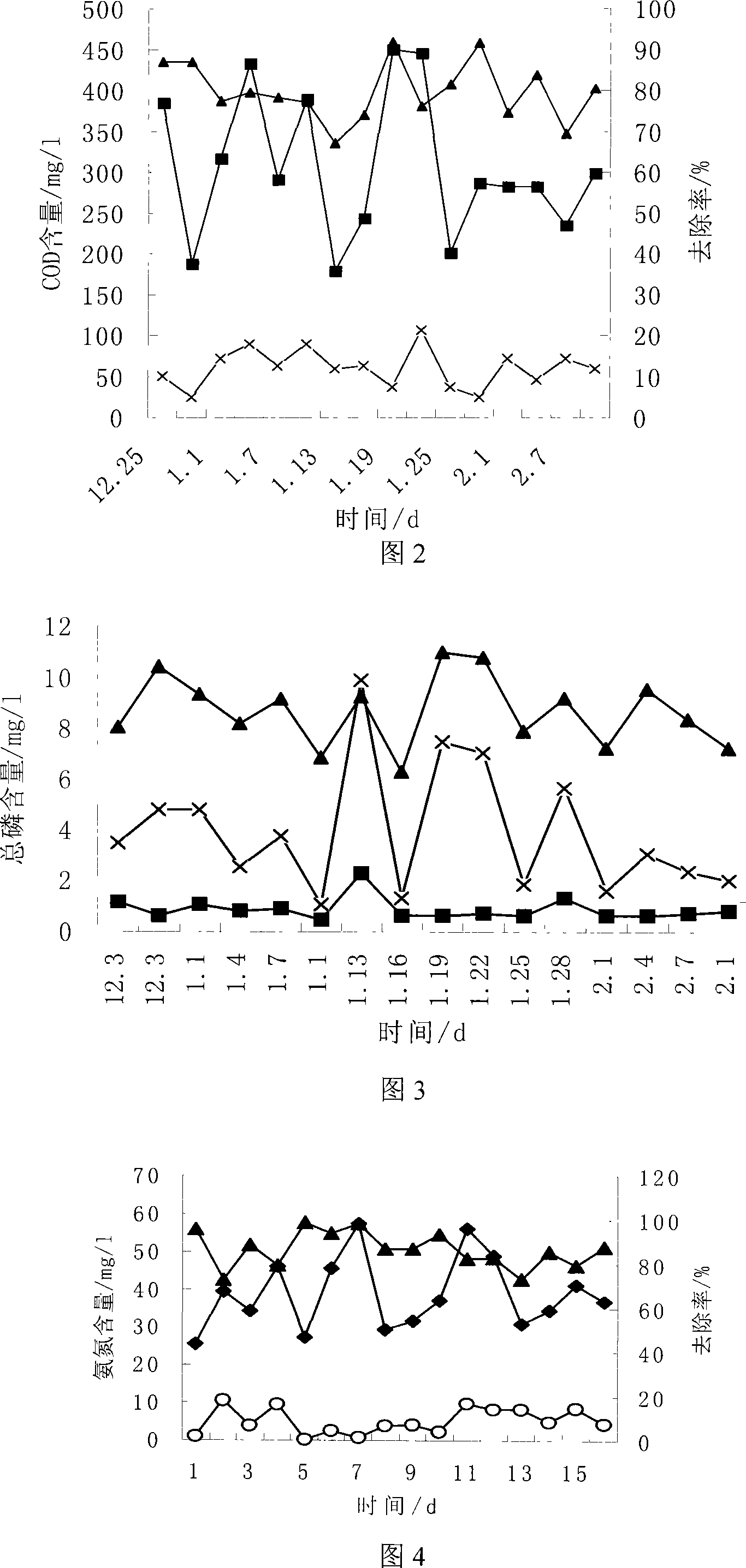Method for low-temperature denitrification phosphorous removal
A technology of nitrogen and phosphorus removal and low temperature, which is applied in the direction of aerobic and anaerobic process treatment, can solve the problem of difficult to achieve simultaneous nitrogen and phosphorus removal, and achieve the effect of sufficient carbon source and beneficial to nitrogen removal
- Summary
- Abstract
- Description
- Claims
- Application Information
AI Technical Summary
Problems solved by technology
Method used
Image
Examples
specific Embodiment approach 1
[0020]Specific embodiment one: as shown in Figure 1, the processing system adopted in the method for the low-temperature denitrification and dephosphorization of this embodiment consists of anoxic pond 1, anaerobic pond 2, aerobic pond 3, first sedimentation pond 4, contact The oxidation tank 5 and the second sedimentation tank 6 are composed of six structures. The treatment method is: 1. Cultivation and fixation of low temperature resistant denitrifying bacteria and nitrifying bacteria: the anoxic tank 1 uses fillers to fix the denitrifying bacteria on the polyurethane foam filler through the natural hanging film, and the contact oxidation tank 5 uses the immobilization method to fix the denitrifying bacteria on the polyurethane foam filler. The nitrifying bacteria are fixed on the polyurethane foam filler, the specific process is as follows: under the condition of 4 ~ 10 ℃, put the activated sludge into the polyurethane foam container, aerate, aerobic culture; after one week ...
specific Embodiment approach 2
[0031] Specific embodiment two: in the present embodiment, the process that the nitrifying bacteria isolated in step 2 is fixed on the polyurethane carrier by enrichment culture is as follows: (1) under the condition of 4 DEG C, the nitrifying bacteria are enriched and cultivated, when the MPN counts, the concentration reach 10 5 cells / ml, the enrichment culture is considered successful; take out the cultivated strain culture solution and centrifuge at n=4000 rpm for 15 min, discard the supernatant, wash the precipitate twice with phosphate buffer solution, and wash three times with normal saline Centrifuge again, discard the supernatant; add distilled water to the wet bacteria to prepare a suspension of psychrotrophic bacteria, and the OD of the psychrotrophic suspension is 585 About 1.854; (two) use Na 2 CO 3 Regulating saturated boric acid pH value is 6.7, and polyvinyl alcohol is dissolved in 100 ℃ of water baths and is cooled to 30 ℃; (3) the nitrifying bacteria suspens...
specific Embodiment approach 3
[0032] Embodiment 3: In this embodiment, the side length of the polyurethane foam is 1.5-3.0 mm, the bulk density is 0.06 kg / L, and the bulk volume is 500 ml. Others are the same as in the second embodiment.
PUM
 Login to View More
Login to View More Abstract
Description
Claims
Application Information
 Login to View More
Login to View More - R&D
- Intellectual Property
- Life Sciences
- Materials
- Tech Scout
- Unparalleled Data Quality
- Higher Quality Content
- 60% Fewer Hallucinations
Browse by: Latest US Patents, China's latest patents, Technical Efficacy Thesaurus, Application Domain, Technology Topic, Popular Technical Reports.
© 2025 PatSnap. All rights reserved.Legal|Privacy policy|Modern Slavery Act Transparency Statement|Sitemap|About US| Contact US: help@patsnap.com


